 I would never force anyone to submit to the tyranny of technology. It can be complicated and intimidating, boasts a language all its own and has a tendency towards flakiness. However, if the world refused to embrace technology, we’d still be on horseback, boiling water over an open fire and licking a stamp instead of sending an email.
I would never force anyone to submit to the tyranny of technology. It can be complicated and intimidating, boasts a language all its own and has a tendency towards flakiness. However, if the world refused to embrace technology, we’d still be on horseback, boiling water over an open fire and licking a stamp instead of sending an email.
The appliances we take for granted every day – from the coffee maker to the lamp stand – help us to function each day. Some may find the latest tech “toys” dispensable, like a slick tablet or the latest smart phone, but they are signs of what is to come. Although making music requires instruments with no additional technology, learning how to play these instruments can be greatly enhanced by technological tools.
There are those that fear technology will take the place of a human teacher or that a tablet may distract learning and prevent a student-teacher connection. Others claim they’d rather learn “the old-fashioned way” but assume if they resist technology it will run them over and so begrudgingly drag their feet to the Apple Store.
I understand the fearfulness, and know the trepidation of those who feel coerced into the technological world. We all know it is here to stay and today’s students not only embrace technology within their lifestyle, they expect it. So yes, it’s time to break the cycle and replace fear and resistance with information and skills.
The good news? If you have avoided using a large desktop computer, sequencer, CD burner, camcorder, count yourself lucky. Those bulky, somewhat limiting tools are no longer necessary thanks to Steve Jobs’ vision of a slick tablet and accompanying apps. An iPad is light enough to fit in the palm of your hand yet strong enough to equip you with just about everything you might need as a savvy music teacher or student.
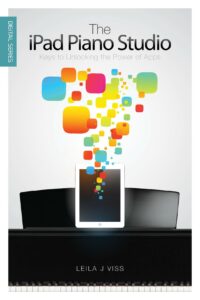 My book, The iPad Piano Studio: Keys to Unlocking the Power of Apps, was written, particularly for teachers, out of my fascination with something so small that is capable of morphing into just about anything with the help of the right app. The book dispels the notion that the iPad is only for those who have an extensive background in technology, and propels those who prefer to stick with what has worked in the past to experiment and integrate technology bit by byte into daily lessons. The iPad has revolutionized my already tech-savvy studio by streamlining so many essential tools into one hand-held device. It can do the same for you.
My book, The iPad Piano Studio: Keys to Unlocking the Power of Apps, was written, particularly for teachers, out of my fascination with something so small that is capable of morphing into just about anything with the help of the right app. The book dispels the notion that the iPad is only for those who have an extensive background in technology, and propels those who prefer to stick with what has worked in the past to experiment and integrate technology bit by byte into daily lessons. The iPad has revolutionized my already tech-savvy studio by streamlining so many essential tools into one hand-held device. It can do the same for you.
The iPad has some key native apps such as the camera, a mailbox, a browser and more, but the App Store is stocked with apps that will transform your iPad into a repository of incredibly useful tools. As the selection of apps can be overwhelming I’ve trimmed my growing list of favorites to five that I believe will specifically enhance your Simply Music lessons.
You’ll find a brief description of each app along with the folder in which I store the app on my iPad home screen. In addition, available operating systems are listed and are hyper-linked if you are interested in purchasing them.
 1) Right Note
1) Right Note
Developer: Orange Qube
Folder: Intervals
Compatible: iOS
Price: Free (trial version) or $6.99 (US), $7.49 (Aus)
Right Note boasts four extensive modes that challenge listeners to compare intervals, identify intervals within the context of a small phrase, match pitches and dictate melodies. With the inclusion of well-sequenced lesson plans and options to isolate intervals for customized exercises within each mode, ears can master intervals of their teacher’s choice or students can follow the various levels designed by the developers. The allure of Right Note is the recent addition of the microphone. Those in training can play their answers on an acoustic piano and even have an option to hunt and peck before entering the correct answer. The microphone magically picks up the performance to be judged correct or incorrect by the app. If the wrong answer is entered, the player is given a chance to hear the sample again before a second attempt. Yes, at $6.99, Right Note may seem pricey as it is dedicated solely to ear training. However, this app closely simulates playing by ear with instant and beneficial feedback, making it well worth your consideration.
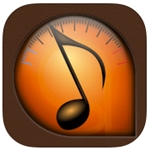 2) Anytune Pro
2) Anytune Pro
Developer: Anystone Technology, Inc
Folder: Power Tool
Compatible: iOS
Price: Free (trial version) up to $14.99 (US) $15.99 (Aus)
When attempting to learn a favorite piece by ear, this app will serve you well. Anytune, as its name implies, can import any tune from your iTunes library and slow it down and loop certain sections when repetition is required for mastery. The app also can change the pitch of your selected tune if you are interested in learning it in a more friendly key.
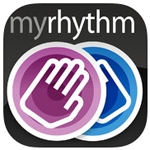 3) My Rhythm
3) My Rhythm
Developer: Gregory Burk
Folder: Rhythm
Compatible: iOS
Price: $1.99
My Rhythm dons a hip look with colorful drum pads. Players must choose various grooves and instruments and maintain a steady pulse while reading rhythms within a unique box and dot notation. As play advances, the box notation disappears, and the ears must kick into gear to match the rhythms played. Bonus: this app features opportunities to create original rhythms.
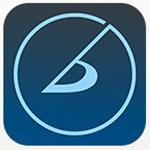 4) iReal Pro
4) iReal Pro
Developer: Technimo, LLC
Folder: Power Tools
Price:$7.99 (US) $10.99 (Aus) with in-app purchases available.
Voted one of Time Magazine’s 50 best inventions in 2010, this recently redesigned app qualifies as a power tool because it transforms your device into a book to create, edit and even print chord charts. In addition, with one tap, the iReal Pro provides a back-up band featuring piano or guitar, bass and drum accompaniments for your lead sheets and creative projects.
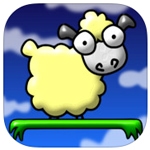 5) The Most Addicting Sheep Game (TMASG)
5) The Most Addicting Sheep Game (TMASG)
Developer: Just So
Folder: Rhythm
Price: $0.99
One may question why a serious piano teacher would recommend this app as it borders on the ridiculous. The point: players must tap or swipe to the beat of catchy tunes to prevent sheep from tumbling off a narrow path. In my defense, scheduling time to play TMASG may “provide just the right mix of levity and challenge needed to keep students on the beat, motivated, and returning for more.” These words are borrowed from my recent AND first article in the Nov/Dec Clavier Companion. I’m honored to be a regular contributor. Look for my articles on integrating apps in daily lessons entitled “First Looks: Apps for Teaching.” Warning: if you do purchase the app, watch out; this is the most addicting app in my studio.
Teachers – curious to know how to integrate these apps into every lesson? My book The iPad Piano Studio: Keys to Unlocking the Power of Apps answers this question and so much more. In addition, this hybrid paperback experience is available in a digital edition and both include QR codes which when scanned, bring you to a correlating and growing video library and regularly updated blog.







